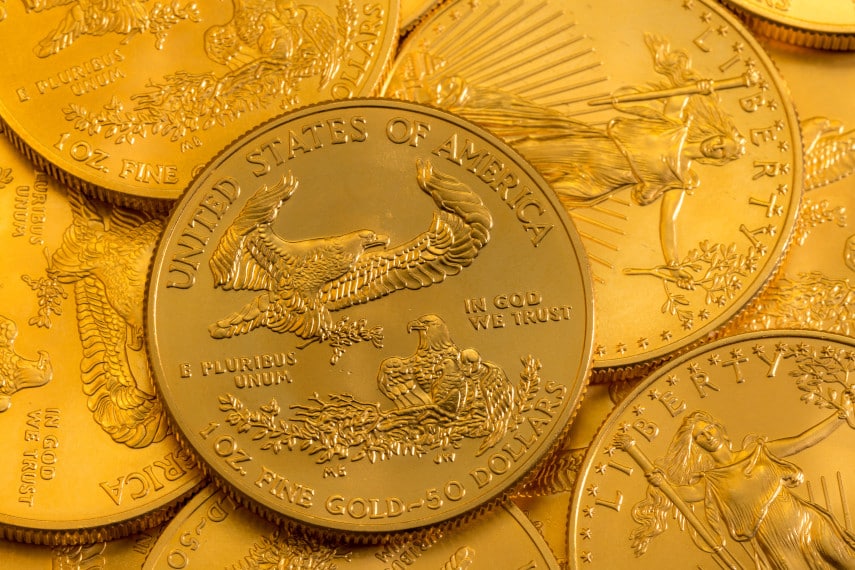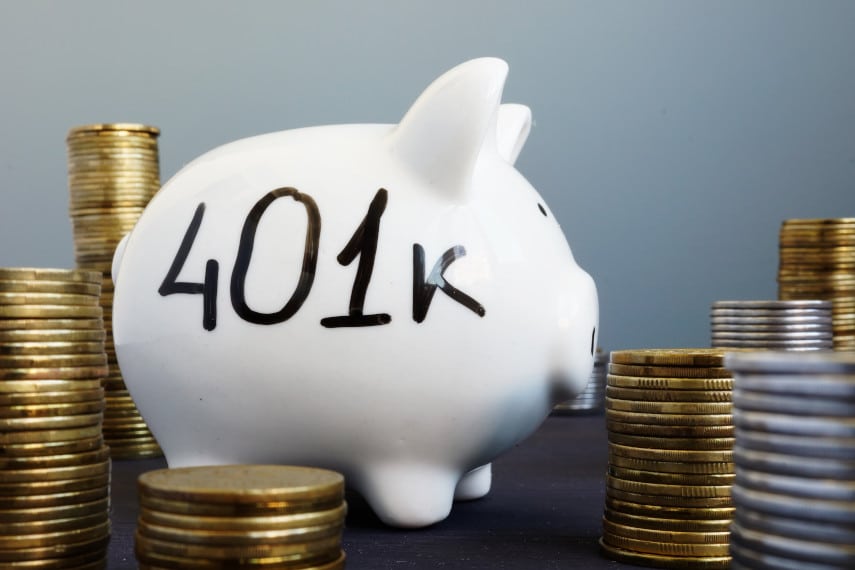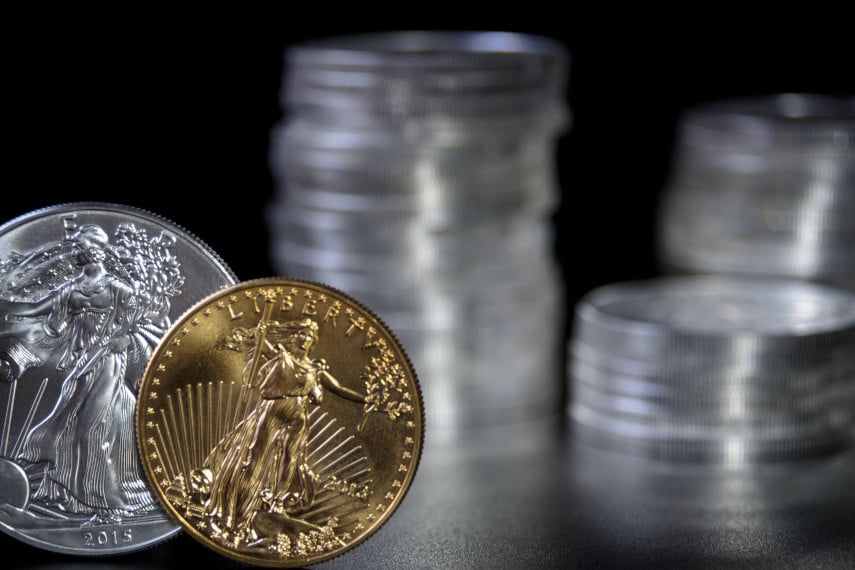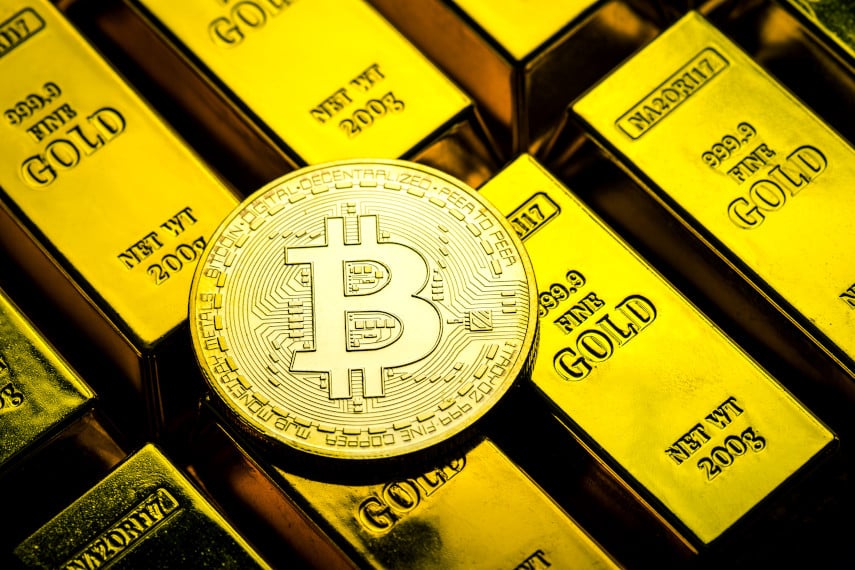
Recession is never something that anyone wants to face, but it’s a nearly inevitable consequence of monetary-fueled economic expansions. Everyone loves the boom phase, but no one likes the bust phase. Yet even during that bust phase there are still opportunities to make money.
One of the questions that many people have, however, is how exactly to make money during a recession. Stock markets normally decline during recessions, resulting in portfolio losses that can take months or even years to make up.
Many people turn to gold during a recession, given gold’s reputation as a safe haven asset and a store of wealth. But is gold really a good investment during a recession?
What Is a Recession?
Recessions in the United States are officially defined by the National Bureau of Economic Research (NBER). So while the economy may look and feel sluggish, it isn’t until the NBER has officially declared a recession that a recession is deemed to have occurred.
Unofficially a recession is usually defined as two consecutive quarters of negative economic growth, with economic growth normally being defined as gross domestic product (GDP). But that isn’t an exclusive definition.
The recession of 2020, for instance, was the result of only two months of negative growth. The shock and severity of that recession was so great that, even though it didn’t last for two quarters, it was nonetheless defined as a recession.
Hallmarks of Recession
Recessions often have characteristics that mark them. Here are a few of the factors the NBER and other analysts use to determine whether a recession is occurring.
Unemployment
One of the strongest indicators of a recession is rising unemployment. During recessions, unemployment tends to rise, and sometimes significantly.
That’s because recessions result in numerous companies going out of business or downsizing their operations as a result of falling consumer consumption. As a result, these companies lay off their employees either due to bankruptcy or because they need to reduce their costs.
During the Great Depression, unemployment peaked at 24.9%. During the 2008 financial crisis it was nearly 10%. And during the 2020 recession it was nearly 15%.
If you look at figures for the unemployment rate, it tends to increase sharply during a recession, then peaks just after the recession occurs. This of course doesn’t mean that unemployment causes recessions, it just means that higher unemployment is one of the effects of a recession occurring.
Thus far the US economy hasn’t experienced a jump in the unemployment rate, although some might argue that the traditional measure of the unemployment rate doesn’t adequately measure both unemployment and underemployment. But if the unemployment rate starts to move over 4% and toward 5%, that could be a signal that recession is underway.
Economic Slowdown
With the traditional understanding of recession being defined as two consecutive quarters of negative economic growth, it’s clear that the overall definition of recession will be defined by economic growth. Assume a scenario in which unemployment was increasing but in which economic growth was increasing by 5% a year. Would anyone classify that as a recession? Probably not.
One of the key aspects of economic growth to keep in mind is that economic growth is most often defined in terms of GDP. GDP includes government spending as one of its components, so even an economy in which business activity is decreasing could theoretically still have rising GDP as a result of an increase in government spending that outpaces the decrease in business activity.
It can also be the case that the economic slowdown isn’t understood for many months. The 2008 recession, for instance, was judged by the NBER to have started in December 2007, but it wasn’t until a year later that the NBER finally declared that the economy was in recession.
By that point, however, stock markets had tanked, Congress had passed a massive bailout package, and everyone realized that the economy was in recession. The belated announcement was more a “No s#!&, Sherlock” moment than a real revelation.
While the initial months of a recession may be too subtle for many people to notice, normally recessions become pretty easy to notice once they’re underway. Consumer spending may decrease, industrial production may drop, and various other factors will indicate that the economy is contracting.
Inflation
Inflation isn’t necessarily a factor that accompanies all recessions, but it can accompany recessions and can exacerbate the harmful effects of a recession. After all, if you’ve just lost your job and the things you need to buy are getting more expensive, life is going to be pretty miserable for you.
The United States hasn’t experienced recession and severe inflation together since the stagflation of the 1970s and the severe inflation of the early 1980s. The 1970s were a decade that many investors would rather have forgotten, as stock markets went nowhere while inflation reached double digits.
The recession of the early 1980s featured severe inflation too, with mortgage rates reaching nearly 19%. We haven’t experienced rates nearly that high today, but the Federal Reserve hasn’t yet finished its rate hike cycle, so there’s no telling how high interest rates might reach.
Inflation appears to be under control right now, but if the Fed ends up returning to monetary easing to react to a recession, inflation could once again start climbing. We’re in a precarious situation today, one in which inflation is coming down but could flare up again during a recession.
Markets During a Recession
Investors don’t like to see recessions because it normally means that the value of their investments decreases. That’s particularly true for stocks, which can suffer major losses during recessions.
During the Great Depression, for instance, stock markets fell nearly 90%. And during the 2008 financial crisis stock markets lost nearly 55% of their value.
It’s no wonder that investors fearing a recession look for stores of value and safe haven assets to protect themselves during the recession. While you can certainly recoup your losses, given enough time, not everyone has years and years to try to win back the losses they suffer during a recession.
Gold During a Recession
Gold has a reputation as a countercyclical asset, one that does well during recessions even when markets are collapsing. Its performance during numerous recessions and financial crises certainly bears that out.
During the 1970s stagflation, for instance, gold made annualized gains of over 30% per year over the course of the decade. While a 30% annual gain is great growth for any asset, to make that kind of average growth over the course of a decade is pretty phenomenal. Most investors would be pleased to make even half that rate of growth over a long period of time.
Gold once again made great gains during the 2008 financial crisis and its aftermath. While gold did see some periods of decline in 2008, overall it gained 25% in the same period that stock markets lost over 50% (October 2007 to March 2009). The gold price then went on to set an all-time high in 2011, as gold remained a shining bright spot during a period in which many assets seemed to be floundering.
Why Do People Invest in Gold?
People invest in gold for a number of different reasons. Some of them see gold as a safe haven asset and store of wealth that can help them protect their wealth during periods of crisis. Others see gold as a hedge against inflation, an asset that can help them maintain their wealth when the dollar and other currencies are being devalued.
Still other people think that the world monetary system is doomed to collapse, and that when that collapse occurs gold will reassert itself as the world’s unit of currency. Finally, you have investors who may just want to hold a small bit of gold to diversify their portfolios.
Things to Think About When Investing in Gold
If you’re looking to buy gold, especially if it’s your first time buying gold, there are several things you’ll want to think about before making your decision.
Your Financial Situation
The first thing you’ll need to think about is your financial situation. Gold costs nearly $2,000 an ounce, and even buying smaller fractional coins can cost a good chunk of change when you buy several of them. Then there’s the fact that certain methods of buying gold, like buying gold with a gold IRA, sometimes can require minimum purchases of $25,000.
You’ll need to take a good hard look at your finances and figure out how much money you have, how much debt you have, and how much you can afford to spend on gold. Yes, owning gold has many benefits, but are there more pressing things you need to spend your money on?
Your Financial Goals
The next thing you need to think about is your financial goals, and how gold can help you achieve those goals. Are you looking to maximize your retirement income? Are you trying to protect your portfolio from losing money during a recession? Are you trying to protect the value of your cash holdings from losing value to inflation?
Figuring out what your financial goals are and how gold can help you achieve them will help you determine how much gold you buy, what type of gold you buy, and how you store it.
Your Time Horizon
You’ll also want to take into account your time horizon when it comes to buying gold. That means looking at how long you might own gold, or how long you may continue investing.
A 40-year-old is obviously going to have a much longer overall time horizon than an 80-year-old. The 40-year-old might own gold for 30 or 40 years, whereas an 80-year-old might only own gold for 10 to 15 years.
It’s important to remember too that investing in gold isn’t supposed to be a get rich quick scheme, it’s generally a long-term play at building wealth and stability in a portfolio. Gold’s reputation for price growth isn’t for making big short-term gains, it’s for gaining value over the long run.
What Type of Gold to Buy
Finally, you’ll want to decide what kind of gold to buy. Among the most popular options for gold investors today are gold coins and gold bars, but there are numerous types and sizes from which you can choose.
The spot prices you see quoted in financial media are based on the prices of 400-ounce gold bars and 1000-ounce silver bars. While it would certainly be nice to be able to own that much gold or silver, there aren’t too many individuals who can afford to splurge on several bars like that.
It’s far more common for people to buy smaller coins, with weights normally going up to one ounce. And then there’s the question of how to buy them and where to store them.
With a gold IRA you can use tax-advantaged retirement savings to purchase physical gold coins or bars which would then be managed by your gold IRA custodian and stored in a bullion depository.
If you choose not to start a gold IRA, you could always make a direct cash purchase of gold coins or gold bars and store them at home, in a safe deposit box, or even at a bullion depository if you make a large enough purchase.
Is Gold a Good Investment for You?
Ultimately the decision about whether or not gold is a good investment for you is one that you’ll have to make after taking into account your unique financial situation and financial goals. But many thousands of Americans have already taken advantage of their opportunity to buy gold to help protect their finances.
Goldco has helped thousands of satisfied customers protect themselves over the years, making over $2 billion in precious metals placements. With direct relationships with mints around the world, we work hard to bring our customers gold coins and gold bars that are guaranteed to be authentic. And our customers’ 5-star reviews are a testament to our dedication to quality products and customer service.
If you’re looking to protect your hard-earned savings with gold ahead of a recession, it’s important to work with partners you can trust. Call Goldco today to learn more about why so many Americans have trusted Goldco to help protect their financial future.






